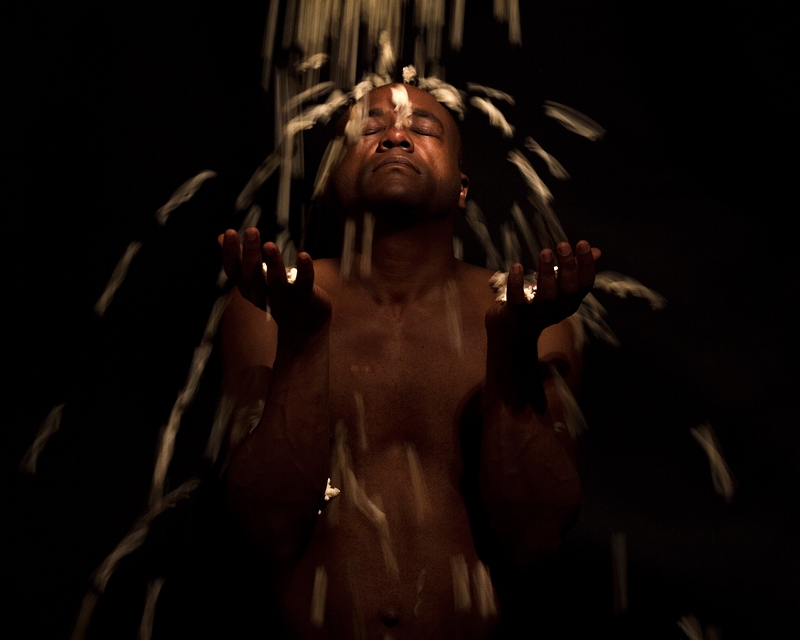In his work, Ayrson Heráclito delves into the rich relations between Africa and Brazil, exploring political, social and cultural connections across the two territories, with a particular focus on the history of slavery and Afro-Brazilian religions, and from a privileged vantage point: Salvador, Bahia, the capital of Afro-Brazil, where he is based. Brazil has the second largest black population in the world (black being defined as people of African descent), after Nigeria, and received more Africans through the slave trade than it did Portuguese who set foot in the country to colonise it. The African presence in Brazilian popular culture is widespread, yet it remains comparatively small in the fine arts, which makes Heráclito’s work even more important.
Heráclito’s approach is often conceptual. He has an ongoing interest in the orisha – spirits that reflect the manifestation of gods originally coming from the African Yoruba religion – and how their codes are constructed through food and composed in language (manifested, for example, in his two-channel videowork Buruburu, 2010 – the title of which means popcorn in the Afro-Brazilian dialect). Palm oil, used in Angolan and Brazilian cuisine, is another food explored in the artist’s work. As a liquid that links the two continents, Africa and America, Heráclito employs the palm oil motif to counterpose ‘the Black Atlantic’, to use the expression coined by Paul Gilroy in his classic study on the relations between Africa and the Atlantic. A key work of his in this sense is Divisor 2 (2001), with its deceptively minimalist appearance: palm oil, water and salt in glass containers remain unmixed: a potent metaphor for the fluid relations between Africa and Brazil.
Born in Macaúbas, Brazil, Ayrson Heráclito works primarily in video and photography but also in installations and other media. This year Heráclito has been shortlisted for the Novo Banco Photo award in Portugal, and in June he will have an exhibition at Museu Coleção Berardo, Lisbon, exploring the history of the famous Maison des Esclaves [House of Slaves] at Goré Island, Dakar, an emblematic point in the history of the slave trade. Selected by Adriano Pedrosa, artistic director, Museu de Arte de São Paulo.
Read all of our 2015 FutureGreats profiles
This article was first published in the March 2015 issue.
